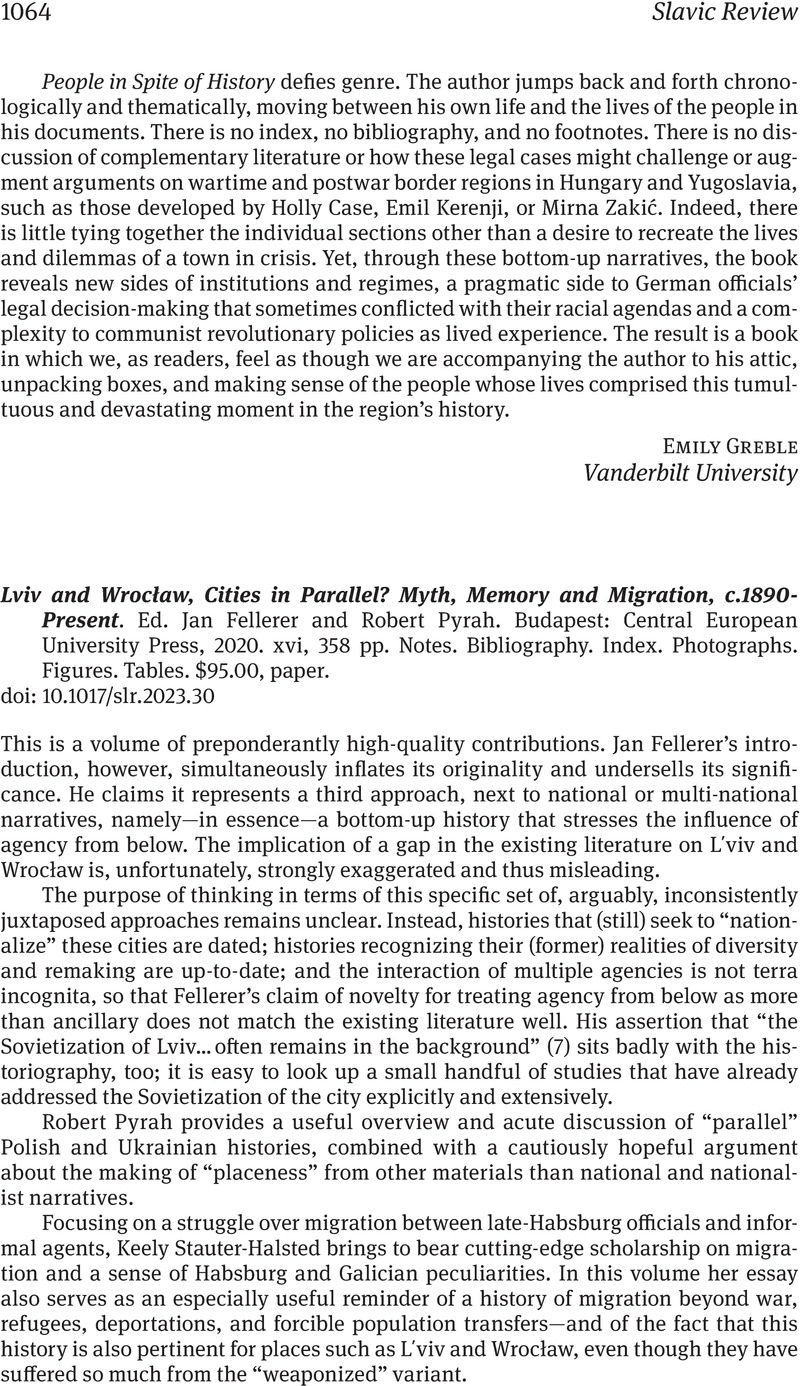No CrossRef data available.
Article contents
Lviv and Wrocław, Cities in Parallel? Myth, Memory and Migration, c.1890-Present. Ed. Jan Fellerer and Robert Pyrah. Budapest: Central European University Press, 2020. xvi, 358 pp. Notes. Bibliography. Index. Photographs. Figures. Tables. $95.00, paper.
Review products
Lviv and Wrocław, Cities in Parallel? Myth, Memory and Migration, c.1890-Present. Ed. Jan Fellerer and Robert Pyrah. Budapest: Central European University Press, 2020. xvi, 358 pp. Notes. Bibliography. Index. Photographs. Figures. Tables. $95.00, paper.
Published online by Cambridge University Press: 12 May 2023
Abstract
An abstract is not available for this content so a preview has been provided. Please use the Get access link above for information on how to access this content.

- Type
- Book Review
- Information
- Copyright
- Copyright © The Author(s), 2023. Published by Cambridge University Press on behalf of the Association for Slavic, East European, and Eurasian Studies


